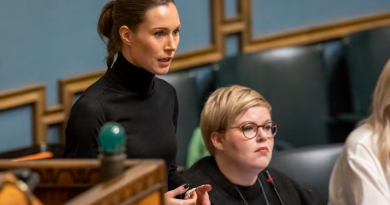Blog: In a rebordered Barents region, Kirkenes Conference takes place
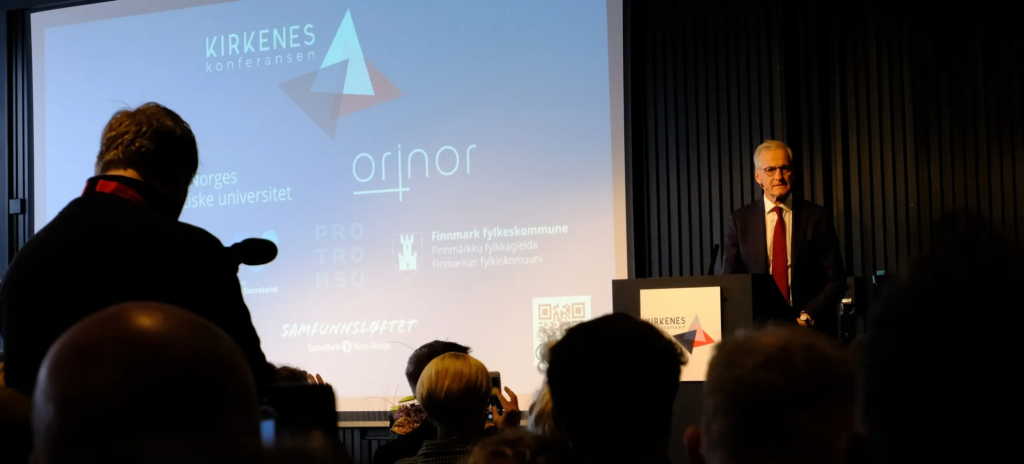
Never would I have thought I’d use my Russian rudimentary language skills to chat to a Ukrainian refugee displaced to the Arctic because of the war.
Earlier this month, I was trying to reserve a hotel room in Kirkenes, the Norwegian town just a few kilometers from the border with Russia. Everything was completely booked. I asked my colleague what the cause might be. She responded, “The Kirkenes Conference.”
The event, which started in 2008, brings together approximately 300 people in the coastal town to discuss the issues facing the Barents region. This cross-border area at the edge of Europe encompasses the northern parts of Norway, Sweden, Finland, and northwest Russia. For nearly a thousand years, the region has alternated between being a cosmopolitan crossroads and an embattled frontline. At times, people like the Sámi, Scandinavians, Finns, Pomors, and Russians have fished, traded, and even created pidgin languages together, like Russenorsk. At other times, relations between many of these same groups have turned adversarial.
With enmity replacing exchange in the Barents region, at this year’s Kirkenes Conference, security and geopolitics stole the show. Dozens of politicians and ambassadors from countries like Ukraine, Canada, and the United Kingdom flew up from sunny Oslo to blustery Kirkenes, where it was still snowing on the first day of the conference on 21 May. The chiefs of defense of four Nordic countries – Norway, Sweden, Finland, and Denmark – also attended, with all of them taking the stage at for a panel on defense cooperation in the Northern Nordic region. This, apparently, seems to be the region consolidating at the expense of the Barents region.
First impressions of a changed city
I had wanted to travel to Kirkenes to see how things had changed since my last visit in 2019, before the pandemic and the full-scale invasion of Ukraine. I was also curious to visit Vardø, Norway’s easternmost town, for the first time. Since the Kirkenes Conference was happening at the same time as I was planning to visit, I decided to attend the conference.
Walking around Kirkenes the day before the conference began, the town seemed quieter than when I had last visited. I had previously traveled to this port town of 3,400 people in February 2019 for the Barents Spektakel, a wintertime arts festival whose theme that year was “the world’s northernmost Chinatown.” Townspeople were dreaming big of a Polar Silk Road to China via the north coast of Russia. Even then, in the thick of winter, there were still Russian grandmothers, or babushki, selling knitwear in the town square.
Now, the babushki are gone, stymied by the greater difficulty of crossing the Norwegian border. Though it’s not fully closed – one minibus, or marshrutka, still makes the journey each day from Murmansk, the Arctic’s largest city, to Kirkenes, departing at 6am and arriving at 10am – Russians need a valid reason such as visiting a close family member to come to Norway.
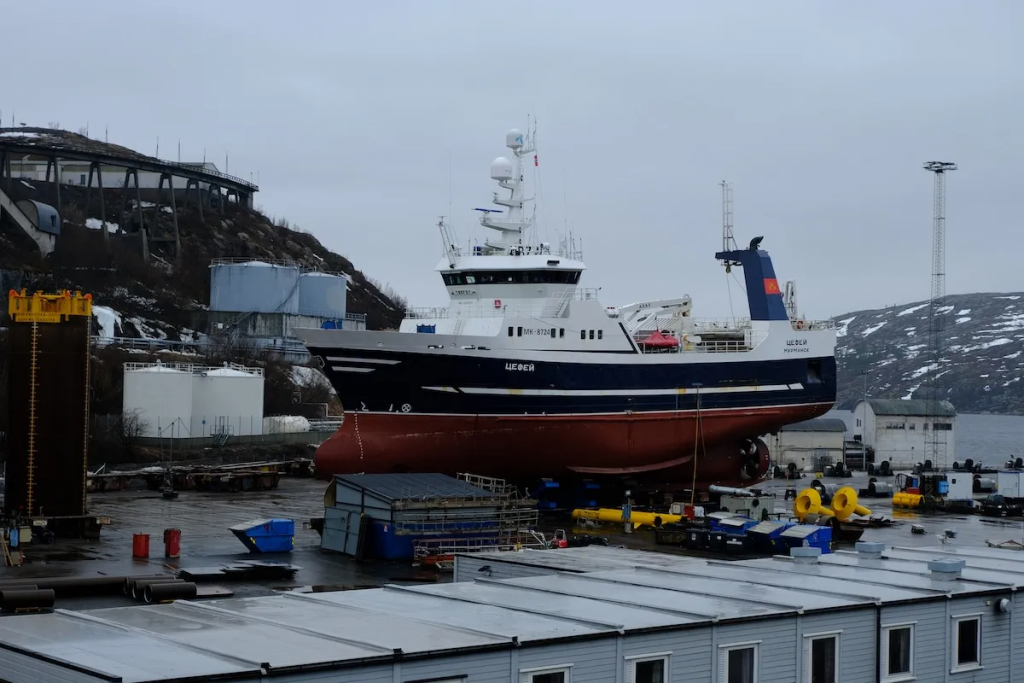
Before the war, things were much easier. Russians would be granted a visa just for wanting to “bring their kid to the new pool in Kirkenes,” according to an individual working at the Norwegian Barents Secretariat. Now, pools aren’t a valid reason for a Russian to come to Norway.
(Pools in the Arctic are a major reason for regional travel. During my fieldwork on the construction of the all-weather highway between Inuvik and Tuktoyaktuk in Canada’s Northwest Territories, several residents of Tuktoyaktuk told me that they were looking forward to more regularly visiting Inuvik’s impressive pool.)
While the Norwegian-Russian border is not quite a closed wall, travel and exploration have become painfully limited. Russian shoppers no longer come over for day trips, and Norwegians no longer hop over to Nikel to enjoy its sushi restaurant, which Kirkenes once lacked. (Judging by the reviews, though, dining at Nikel’s two locations of SushiWok, Russia’s largest sushi franchise, seems as if it would require more daring than crossing the border. One review noted, “One family member was vomiting so much that they had to call an ambulance.” Another casually racist review deemed, “It looks like the Tajiks made it with shovels!”)
When the walls went back up
Cross-border sushi jaunts have been relegated to oral history, and war stalks the Barents region. Riverboat tours to the Russian border attract tourists curious to look across to the other side now that the line is imagined as something of a danger zone. In Kirkenes, a van painted with “STOP PUTIN” is parked next to the monument in honor of the Soviet Liberation, which is dedicated to the soldiers who freed Norway from the Nazis in 1944. An impromptu shrine to Alexei Navalnvy is carefully tended.
The Russian street signs that I fondly remembered from my visits in 2018 and 2019 persist, although there have been calls to take them down. Russian boats and trawlers can still be found in the harbor and shipyard. The Tsefey trawler, for instance, built in 2000, was being fixed in the shipyard during my visit. But two big stores – Biltema, a family-oriented department store, and Elkjøp, an electronics store – are closing as a result of the drop in Russian shoppers, if rumor has it right.
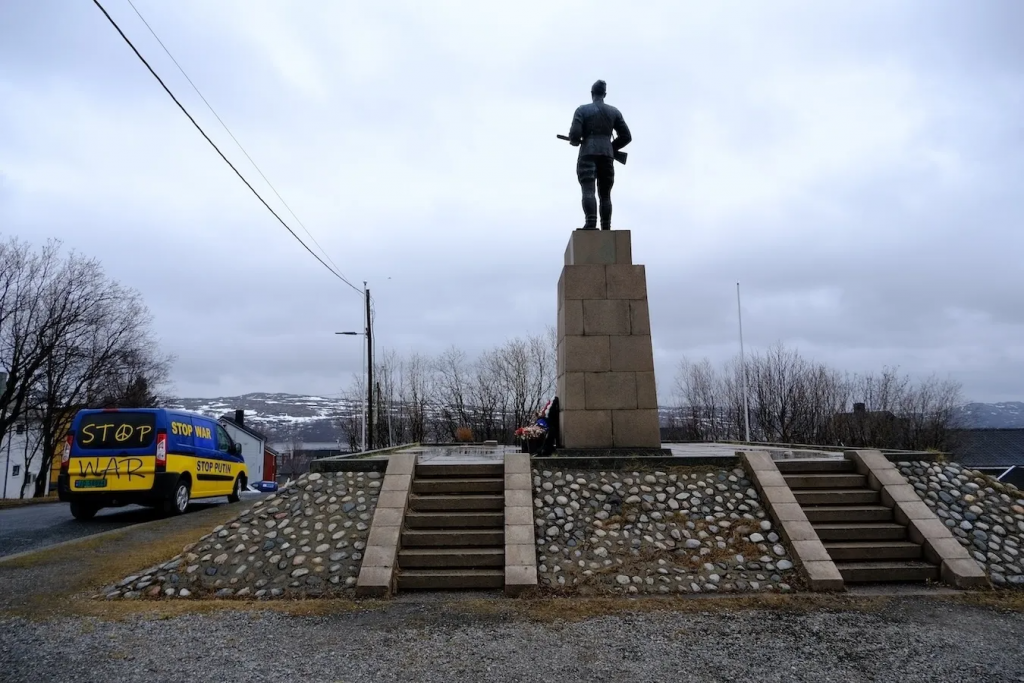
The Norwegian Barents Secretariat still exists, but its mandate is much changed. The regional organization was formed in 1993 to support joint Norwegian-Russian projects with wide support from the Norwegian and Russian foreign ministries, the Sámi Parliament, and county leaders from across all of the four countries brought together by the initiative. For two decades, Norwegian, Russian, Finnish, and Swedish participants worked to build a cross-border region.
Carrying on these efforts, in November 2014 – notably eight months after Russia’s invasion of Crimea – the secretariat hosted a European Forum on Cross-Border Cooperation in Kirkenes. At the event, Pia Svensgaard, the former leader of the Barents Secretariat, declared in her speech, “The border must never become a closed wall through which people can not travel and explore neighboring areas and visits neighbors. With mutual respect for each other, we must continue to develop the border as a bridge between people in our countries.”
The Norwegian Barents Secretariat still exists, but its mandate is much changed. The regional organization was formed in 1993 to support joint Norwegian-Russian projects with wide support from the Norwegian and Russian foreign ministries, the Sámi Parliament, and county leaders from across all of the four countries brought together by the initiative. For two decades, Norwegian, Russian, Finnish, and Swedish participants worked to build a cross-border region.
Carrying on these efforts, in November 2014 – notably eight months after Russia’s invasion of Crimea – the secretariat hosted a European Forum on Cross-Border Cooperation in Kirkenes. At the event, Pia Svensgaard, the former leader of the Barents Secretariat, declared in her speech, “The border must never become a closed wall through which people can not travel and explore neighboring areas and visits neighbors. With mutual respect for each other, we must continue to develop the border as a bridge between people in our countries.”
Never say never, they say.
Today, the Norwegian Barents Secretariat supports very little cooperation with Russia. Some individuals from Russia still choose to work together on events like Barents Pride, the annual pride parade held in Kirkenes, but they do so at great personal risk, especially as advocating for LGBTQ rights in Russia is forbidden. The secretariat is largely focusing on building ties with communities in Finland and Sweden. Instead of looking across the border to Russia, many organizations within the Barents region are turning inward. Yet even this more limited cooperation can be challenging. As my contact at the Norwegian Barents Secretariat explained, their partners in Finland and Sweden often can’t come up with the requisite matching funds to participate in joint projects.
Solidarity and stoicism at the Kirkenes Conference
The tenor of the Kirkenes Conference reflected the dark but determined mood on the ground. Ellen Katrine Hætta, chief of police of the Finnmark District, who has held her position since 2011, put it simply to the audience: “Russia is at war, Russia is a war machine, and they are our neighbor.”
Norwegian Prime Minister Jonas Gahr Støre, who was the conference’s most prominent speaker, cautioned the audience, “We have to be prepared that war may come to Norway. The drama is in Ukraine, but we have a neighbor who is willing to invade another neighbor.”
During his remarks, Støre reflected on his meeting with Trump a few weeks prior. Their tête-à-tête in the Oval Office had sparked a flurry of boastful headlines in Norwegian media given the US President’s expressions of admiration for one of the world’s richest and blondest countries.
“I brought maps to Trump,” Støre recalled. “He sees more than he reads, so that was a good illustration to tell him that 100 kilometers from the border, we have the greatest nuclear arsenal anywhere – and they are pointing at you, not us.”
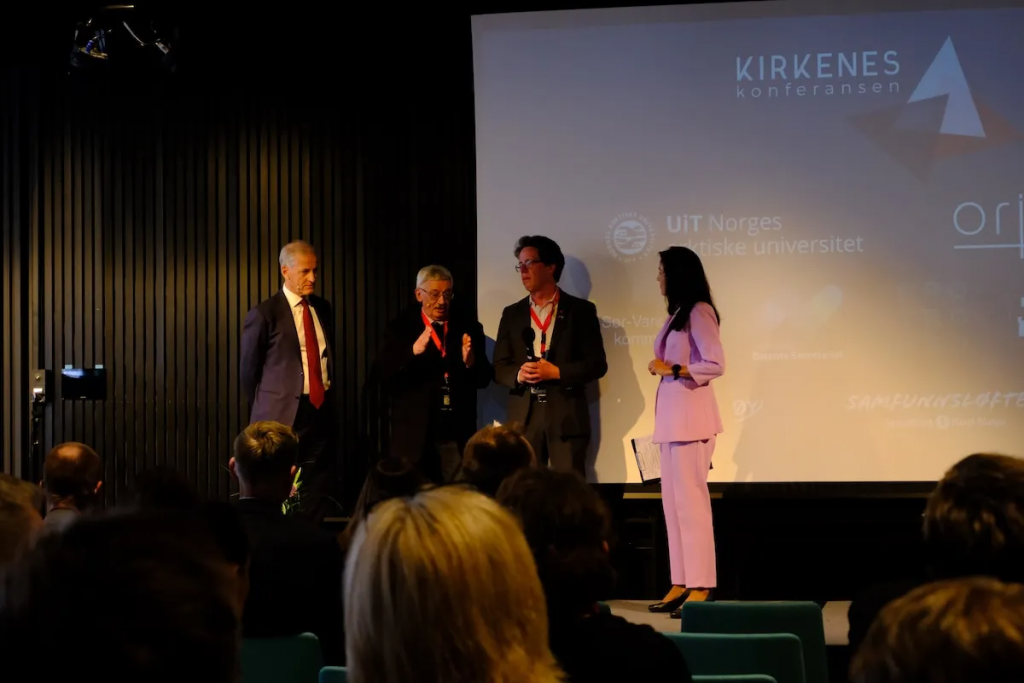
The Norwegian prime minister was referring to Russia’s massive – and growing – stockpile of nuclear arms on the Kola Peninsula. Perhaps trying to assuage Trump, Støre then said, “But we are more secure because of you, and you are more secure because of us.” Nonetheless, he concluded, “The world situation has changed and there’s reason to think this will continue – especially here in the North.”
Støre also spoke on stage with Oleg Orlov, the prominent Russian human rights activist and board member of Memorial. The Nobel Prize-winning non-profit organization has strived for decades to shed light on the injustices committed under Stalin, namely the Gulag system. Though liquidated by the Kremlin in 2022, Memorial still manages to continue its work, now with a focus on the crimes committed under Putin. The non-profit’s members face tyrannical forces: Orlov was imprisoned last year for a Facebook post criticizing the Russian government for descending into fascist totalitarianism. He was released in the prisoner swap that also involved the American reporter for the Wall Street Journal, Evan Gershkovich.
After thanking Norway for assisting with facilitating the prisoner exchange, Orlov expressed, “In Russia, a thriving civil society goes on. Some go underground, but they are there. We must always think of the Russia of tomorrow and we must always support dialogue with those wiho will get my country off of this blind spot it is on.”
But not all are as open to dialogue, and the avenues for conversation are declining. Since the outbreak of the war, fewer Russians and Norwegians are neighbors living side by side in Kirkenes. Many of the Russians who have remained on the Norwegian side of the border are treated with suspicion. Moreover, all of the cross-border work carried out for decades does not seem to have made much of a difference in how people in North Norway view Russia compared to people living in southern Norway, as one survey carried out in 2023 by researchers at OsloMet revealed. For instance, a similarly meager proportion of people in the north and south – six and seven percent, respectively – think sanctions should be lifted.
One reason people in North Norway might not feel more sympathetic towards Russia despite years of exchange is because they may feel a sense of betrayal. The Barents region, which grew closer for thirty years, has shattered. One Finnish man I met from Inari explained how when he was growing up, he would travel by bus (a very nice one at that – “Our own bus!”, he said) to play hockey matches in Russia and Norway. Now, games between boys have fallen victim to wars between men.
Post-invasion, what does trust mean?
Before the conference dinner, I wandered over to the Samovar Theatre for what I thought would be a film called “Icebreaker.” It turns out it was a conversation circle held under the same name. About 20 people, mostly Norwegians, along with a couple of Russians and Danes, gathered to discuss the prompt: “What does trust mean to you?” I tried to follow along with my Swedish language skills.
One Russian woman who was born in the town of Zapolyarny across the border in Russia in the late 1970s, spoke emotionally. She remembered the days before perestroika and glasnost, when she and her friends would climb up on top of a building and point an antenna towards Norway. “ABBA and AC-DC – those were the sounds of freedom,” she remembered. Once the border became easy to cross, she regularly traveled back and forth. In fact, she didn’t think much of the border. But now, that has all changed.
A middle-aged Norwegian man chimed in. He said that after the invasion, he took it upon himself to still say hi to his Russian neighbors. But then his Norwegian neighbors started questioning him. “Why are you saying hi to them?” they would probe. The Russians had clearly become the other. This upset the Norwegian man, for if he can’t even greet people, how will trust ever be built or rebuilt?
The drumbeat of drones
When the four Nordic chiefs of defense gathered on stage on the second day of the conference, they turned their attention to drones, which have been put to deadly use in Ukraine. The war on Russia’s southwest frontier is a testing ground for the future of conflict elsewhere, including the Arctic. But if and when that war comes, the role that drones will play is hard to predict. Both the Finnish and Danish chiefs of defense recognized that there was no use in stockpiling drones because the technology becomes outdated so quickly.
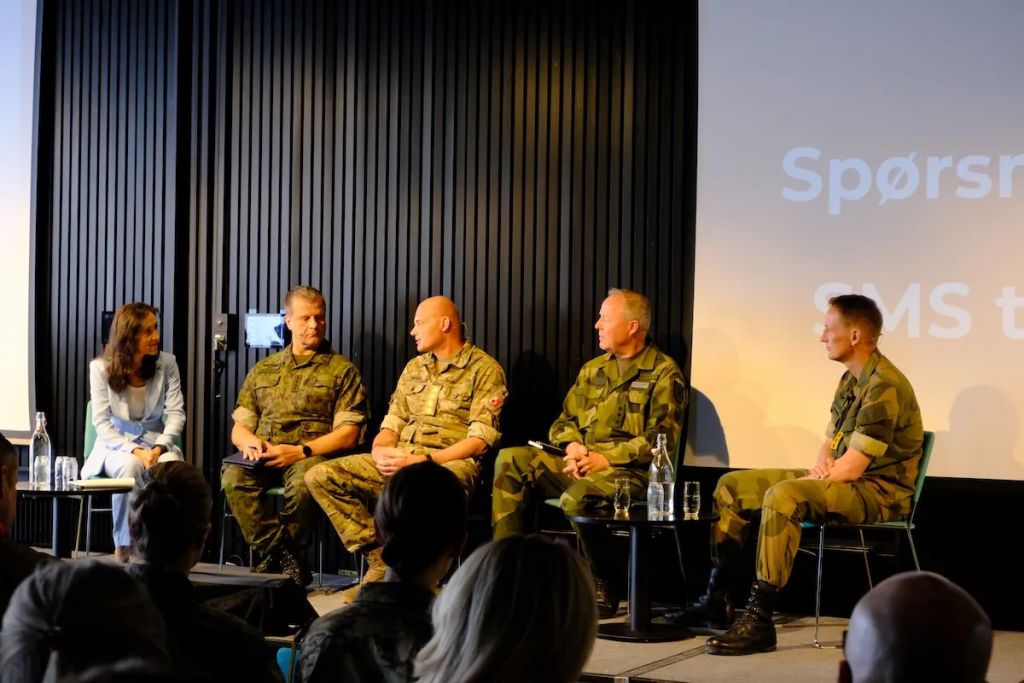
General Michael Wiggers Hyldgaard, Denmark’s Chief of Defense, remarked, “We cannot buy drones now and store them. We need to continuously develop them. I probably need like a hundred, maybe a thousand drones a year to train, exercise, and develop. I don’t need 10,000 in storage. But in a time of conflict and war, maybe I need a thousand drones a week, or a day. So that’s the challenge we need to solve.”
Hyldgaard continued, “If you look at the drone technology in Ukraine, it has changed so much from 2022, with Turkish-made drones that were very effective, to FPV (first-person-view) drones and different drones they used in October last year when I visited Ukraine. Now, they use fiber-optic guided drones in electronic warfare environments. So it changes continuously. And that’s why we didn’t make that mistake to buy the first examples of the drones because that would have been stupid.”
I suppose while nuclear arms are being stockpiled in the Barents Region, drones are one thing that aren’t.
Finally, a chance to use my Russian language skills
As I walked through Kirkenes’ empty streets over the past few nightless days, I felt an eerie sadness. Under the flat gray light of 10pm, I stared at a huge Russian ship in the dry dock, waiting for repairs. A car with a flat tire was parked outside the Barents Hotell. Its molding facades have seen better days, as has its fading Russian language sign meekly advertising “HOTEL – GOSTINITSA.” I came across the Andersgrotta bunker from World War II, which now seems prescient rather than historic. In the new geopolitical climate, a modern civil defense bunker I passed also seemed foreboding rather than banal.
Outside the KIMEK shipyard where Russians used to work, I strolled by a man who looked like he had cataracts in one eye walking a little brown poodle. Down the street, a couple of RVs were parked in front of the abandoned Biltema shop, where piles of dirty snow were melting into puddles. Due to the Kremlin’s crimes, millions are losing their lives in Ukraine while many in Kirkenes are losing their livelihoods.

The next morning, as I was waiting for the bus to Vardø, an older man said something to me. I didn’t understand him at first but, sensing a Slavic accent, I responded in Russian. It worked, and we began chatting for a bit. It turns out he had thought I was Ukrainian, which is why he had started speaking to me. “Slava Ukraini,” I said. “To the heroes – glory!” he smiled back. “You look like a Ukrainian girl!” he told me. I’m half Chinese, half American,” I responded, for simplicity’s sake. He shrugged. “Well, you look Ukrainian! Or maybe Kazakh, we have some Kazakhs in Ukraine,” he said. I laughed and asked him what city he was from. He said Irpin and shook his head in distress.
In graduate school, I decided to study Russian so that I could travel in the Russian Arctic to learn from people in the region’s largest country and speak to Russians at Arctic events. Ever since the war, travel has been off-limits, and Russians have disappeared from conferences and cross-border collaboration. But here I was, at a bus stop in Kirkenes, finally speaking Russian again in the Arctic.
Never would I have thought I’d use my rudimentary language skills to chat to a Ukrainian refugee displaced to the Arctic because of the war. “Maybe we’ll see each other again one day,” he said to me as I got on my bus. “Maybe!” I said, waving goodbye. Glory to the heroes.
This post first appeared on Cryopolitics, an Arctic News and Analysis blog.
Related stories from around the North:
Canada: Carney says Canada is looking to join major European military buildup by July 1, CBC News
Denmark: Danish PM pledges to support Greenland against Trump pressure, Thomson Reuters
Finland: US, Norwegian forces in Lapland for rapid reinforcement exercise, The Independent Barents Observer
Iceland: Iceland’s FM announces defence review, calls revamped security policy ‘urgent’, Eye on the Arctic
Norway: Preparing for trouble, Norway erects fence at exposed border sections, CBC News
Russia: Russia’s nears completion of new Arctic missile carrier, The Independent Barents Observer
Sweden: Sweden’s Armed Forces: Railways must function without modern technology, Radio Sweden
United States: White House releases U.S. Arctic strategy implementation plan, Eye on the Arctic



